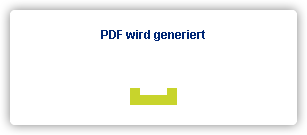Lower tax court clarifies application of EU parent-subsidiary directive for dividends distributed during liquidation period of subsidiary
To the extent a distribution is related to profits generated in pre-liquidation periods the EU parent-subsidiary directive should be applicable.
In a decision dated 26 October 2022 (and published on 27 March 2023), Germany’s lower tax court of Cologne provided welcome clarification when it ruled that a 0% dividend withholding tax (WHT) rate under the EU parent-subsidiary directive applied to a German company’s distribution of operating profits that were generated prior to a liquidation period, even though the dividend was resolved and paid during the liquidation period.
Background
In the case decided by the lower tax court, a German GmbH made a dividend distribution to its Luxembourg parent company while in the process of being liquidated. The dividend distribution took place after the formal liquidation of the GmbH was resolved but before the company was finally extinguished from the commercial register. The dividend distribution was funded out of operating profits of the GmbH that were generated before the liquidation proceedings were initiated.
The tax authorities refused to apply a 0% dividend WHT rate based on the EU parent-subsidiary directive and, instead, granted a reduced 10% dividend WHT rate based on the Germany-Luxembourg double tax treaty. The tax authorities argued that based on the wording and intent of article 4 (1) of the EU parent-subsidiary directive and section 43b (1) sentence 4 of the German Income Tax Code (ITC), which implements the directive into domestic tax law, dividend distributions that are made “on the occasion of a liquidation of a company” do not benefit from the 0% dividend WHT rate as provided by the directive. The tax authorities reasoned that since the liquidation of a company starts with the resolution to liquidate the company, distributions that are made during the liquidation period are excluded from the benefits of the EU parent-subsidiary directive.
Decision of the lower tax court
The lower tax court disagreed with the tax authorities and confirmed that the applicable dividend WHT rate should be a 0% dividend WHT rate based on the EU parent-subsidiary directive. The court explained that the terminology in article 4 (1) of the EU parent-subsidiary directive and section 43b (1) sentence 4 ITC referring to distributions “on the occasion of a liquidation of a company” must be interpreted in a narrow sense and not be applied to distributions that are funded out of operating profits that were generated before the liquidation period, even if the dividend was resolved and paid during the liquidation period.
The lower tax court, however, rejected the claim of the taxpayer with regard to a second dividend distribution that was paid at the end of the liquidation period of the GmbH. The shareholder’s resolution for this dividend explicitly referred to the dividend payment as the final act of the liquidation. Even though this dividend also was funded out of operating profits that were generated during pre-liquidation periods, the court qualified the dividend as being made “on the occasion” of the liquidation and, therefore, not eligible for a 0% dividend WHT rate under the EU parent-subsidiary directive.
The lower tax court did not allow for an appeal to the federal tax court; however, the tax authorities filed a complaint with the federal tax court regarding the non-admission of an appeal against the decision.
Comments
The decision of the lower tax court is a welcome clarification regarding the application of the EU parent-subsidiary directive during the liquidation period of a German company. Even though the court’s decision allows the application of the EU parent-subsidiary directive for distributions during the liquidation period, taxpayers should carefully evaluate a distribution of profits that were generated during the period before the liquidation in order to avoid any discussions with the tax authorities. In order to rely on the decision of the lower tax court, clear documentation should be available to demonstrate that the profits that are distributed were generated before the initiation of the formal liquidation process. Furthermore, careful attention should be paid when drafting the shareholders resolution for a dividend distribution during the liquidation period.


